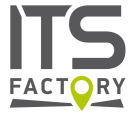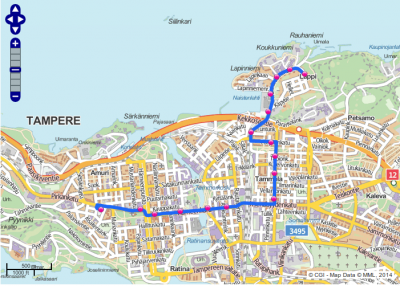Ero sivun ”Journeys API” versioiden välillä
Ei muokkausyhteenvetoa |
Ei muokkausyhteenvetoa |
||
| Rivi 23: | Rivi 23: | ||
<br><br> | <br><br> | ||
On a given time on a given DAY TYPE or a given ROUTE, the JOURNEY stops on certain STOP POINTS from where passengers can board or alight the vehicle. A CALL groups together the STOP POINT where the vehicle stops, and the time when the vehicle stops on that STOP POINT. | On a given time on a given DAY TYPE or a given ROUTE, the JOURNEY stops on certain STOP POINTS from where passengers can board or alight the vehicle. A CALL groups together the STOP POINT where the vehicle stops, and the time when the vehicle stops on that STOP POINT. | ||
==Queries and Responses== | |||
TBW | |||
Versio 3. heinäkuuta 2014 kello 04.55
This is a workspace for Journeys API which allows developers and clients to access public transport lines, routes, stops and schedules. All material on this page are draft material and subject to significant change.
Concept
Journeys API allows developers and clients to access following information via REST API
- Routes on which public transport services operate
- Lines, or in other words grouping of routes. For example Line 2, which runs from Rauhaniemi to Pyyninkintori in Tampere
- Journeys made by public transport vehicles on certain line and route at certain day and time
- Stops where public transport vehicles stop during their journeys
The API allows accessing these concepts as hierarchy of objects (see later) as well as performing searches.
API Entities
The API is built on top of NeTEx entity model (http://user47094.vs.easily.co.uk/netex/), from which the entities in this API are derived. Following picture outlines the entities and their relationships.
Route, Route Link and Route Point
ROUTE entity describes a path through (a road or a rail) network, which is used by a public transport service (such as bus or a tram). A ROUTE is made up of a sequence of ROUTE LINKS which split the route into "pieces". Each ROUTE LINK starts and stops on ROUTE POINTS which typically map to a certain place in city infrastructure (a road junction, stopping place or a point of interest). All ROUTE LINKS laid out into a sequence form up the ROUTE (the start ROUTE POINT of the first ROUTE LINK is the start of the ROUTE and the end ROUTE POINT of the last ROUTE LINK is the ending point of the ROUTE). Following picture is taken from Tampere "reittikartta" and outlines a ROUTE through Tampere.
Line
LINE entity is a grouping of ROUTES that is generally known to the public with a common name, such as "Line 2". ROUTES on the same LINE usually follow similar ROUTEs.
Journey, Call, DayType, DayTypeException and StopPoint
JOURNEY describes public transport vehicle's run on a given ROUTE through the city. Typically the run occurs at the same time on multiple days during a week. For example a certain JOURNEY on given ROUTE could start 10:00 AM on Mondays, Tuesdays, Wednesdays, Thursdays and Fridays. DAY TYPE, attached to a JOURNEY, classifies the conditions on which kind of days the JOURNEY occurs. Conditions can be week day names, but other kind of conditions can apply too (such as "busy day" or "all weekdays"). DAY TYPE EXCEPTION provides mechanism to temporarily deviate from conditions imposed by a DAY TYPE. For example if a JOURNEY would occur on all weekdays, public holidays could be modeled as DAY TYPE EXCEPTIONS. In other words we could say "This JOURNEY runs on every week day except 21.5.2014, because this day is Labor Day".
On a given time on a given DAY TYPE or a given ROUTE, the JOURNEY stops on certain STOP POINTS from where passengers can board or alight the vehicle. A CALL groups together the STOP POINT where the vehicle stops, and the time when the vehicle stops on that STOP POINT.
Queries and Responses
TBW


